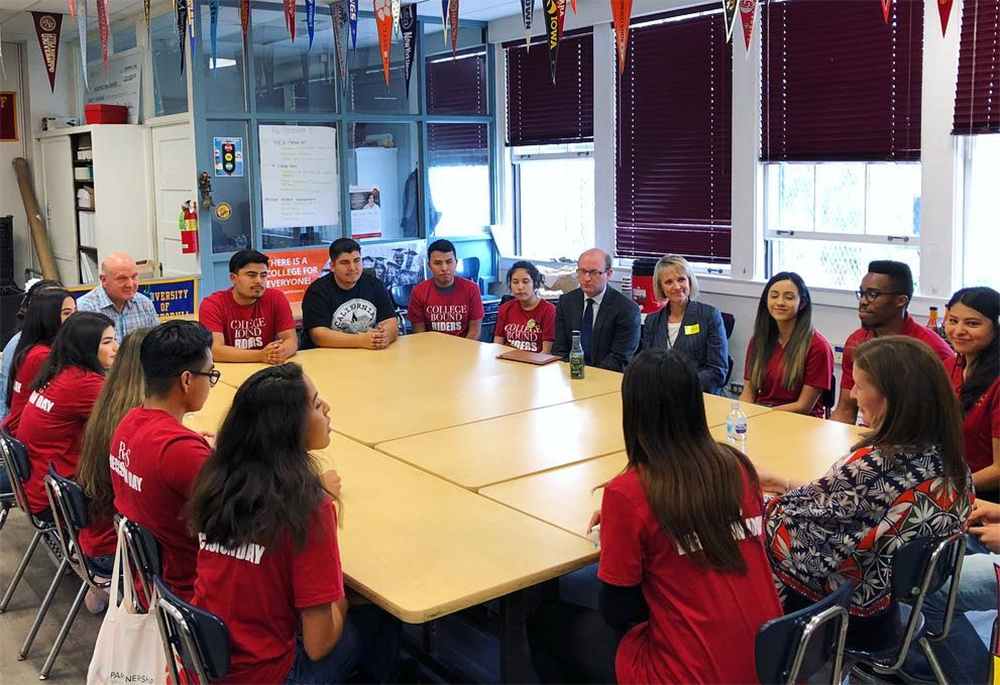On May 18, College Advising Corps announced their plan to enroll one million low-income, first-generation or underrepresented students in college by 2025.
College Advising Corps is a national organization that helps advise underrepresented high school students. Kyle Goodfellow, the development coordinator for College Advising Corps, said the recent goal is made possible through their near-peer advising program and help and support from others.
“It’s going to require a lot of deepening partnerships and expanding our work in places that we are already in,” Goodfellow said. “It’s not just expanding and going in to do partner institutions and do high schools but it’s about deepening our work in the places that we already are to improve outcomes and serve out students even better.”
The goal to enroll one million students in college by 2025 also received support and a large donation from Steve and Connie Ballmer, the co-founders of the Ballmer Group.
“They were attracted by this bold goal of enrolling a million students and gave a bold gift of $20 million to help support that effort,” Goodfellow said.
College Advising Corps was founded in 2005 when founder Nicole Herd, a professor and graduate of the University of Virginia, got the idea for the organization after reading an article about the gap in college counselors in America.
“The current student to counselor ratio is 482 to one…which is a huge gap because the recommended number is about 250 students to one counselor,” Goodfellow said. “Dr. Herd saw that as a great need, and so she thought to herself, wouldn’t it be great if we, similar to a Teach for America or Peace Corps, getting really talented or highly educated students out in the field and actually help high school students get to college.”
College Advising Corps runs two programs, near-peer advising and the virtual advising initiative. For near-peer advising, College Advising Corps hires recent college graduates to work at various low-income high schools across the country.
“We’re placing those college graduates which we refer to as near-peer advisers, and they go and serve in those high schools for either one or two year service stents and they work as high school advisers–not guidance counselors but very similar,” Goodfellow said. “They really support the work of existing guidance counselors to propel students who are largely first generation, low-income underserved students to get to college, as there is a huge gap there with that particular population getting college acceptances and then getting into school and thriving in and after college as well.”
Peter Sharp, a second-year studying human biology, thinks College Advising Corps is doing something positive.
“I know at my high school we didn’t have a lot of guidance counselors to help you fill out forms and things for college,” Sharp said. “So it’s hard to figure it out especially if you don’t have someone in your family who has already been to college.”
Through virtual advising, College Advising Corps also works with students from moderate income families who excel academically.
“These are students who would very likely be applying to very elite institutions in the country but are still from very modest backgrounds,” Goodfellow said. “[We] help them through virtual space, whether that’s through Skype, FaceTime, video chat, through text messages, email, anything but sort of being there in person, they’re supporting their students in these ways, again, through the college admissions process.”
Operating out of Chapel Hill, College Advising Corps is currently in 14 states, with 650 near-peer advisers and 24 partner institutions, including NC State. Students can get involved at NC State’s College Advising Corps website.








